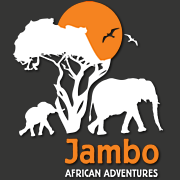Background Information
Hwange is Zimbabwe’s largest national park – a spectacular 4,600 square miles forming the northeast border of the Kalahari Desert of Botswana. The park is famous for its huge herds of elephant and buffalo.
More than 100 different mammal species reside here including lion, leopard, giraffe, hippo, crocodile, cheetah, zebra, jackal, wildebeest, many types of antelope and over 400 species of birds. The park includes a number of habitats including Kalahari sandveld, mopane woodland, river courses and pans. The waterholes found throughout the park support the rich wildlife and may reward you with views of the diverse animal population.
Climate
Hwange’s two clear-cut seasons cause the local temperature to move around a bit. The Dry season (April to October) starts off warm before temperatures dip in the middle of the year. Then the heat quickly gets turned up, culminating in the blazing heat of October. The Wet season (November to March) cools things off at first with its stormy weather before settling into a pattern of hot, humid days.
Hangwe National Park
Hwange National Park is very accessible. Main Camp can be reached on a tar road, 200km/124mi south of Victoria Falls. The drive takes less than three hours. To reach some of the other camps deeper in the park, a 4WD might be necessary, especially during the wet months, from May to October. Your tour operator can easily organize chartered flights as some lodges have airstrips. You will likely travel to Hwange NP as part of a package and not as a solitary destination. You will probably arrive in Zimbabwe by way of Victoria Falls Airport (VFA), near the town of Victoria Falls. Usually, you will be picked up from the airport or hotel by your tour operator, who will also organize additional travel throughout the country as part of your tour package.
With over 100 species present, Hwange has the widest variety of mammals of any national park in the world. Its claim to fame is one of the largest elephant populations in the world. There are 20,000 to 70,000 individuals that congregate around the waterholes toward the end of the Dry season. Predators, including all three of the big cats, are regularly spotted. The park has an impressive variety of antelope, including some of the unusual species such as sable antelope and greater kudu. The park is an important breeding ground for wild dog.
With over 420 species recorded, and its good infrastructure, Hwange is Zimbabwe’s birder’s hotspot. Hwange is probably best known for its huge population of raptors. There are two main birding areas: the one around Main Camp and one to the north of the park, around Robins and Sinamatella Rest Camps. Both areas are linked by a network of roads that take visitors through a variety of habitats, including many waterholes that attract large numbers of animals and birds. Migratory birds are present from November to April.
Best Time to Visit
July to October, in the Dry season, is the prime time for wildlife viewing in Hwange National Park. The many waterholes become gathering places for animals, while the thinning vegetation makes them easier to spot.








